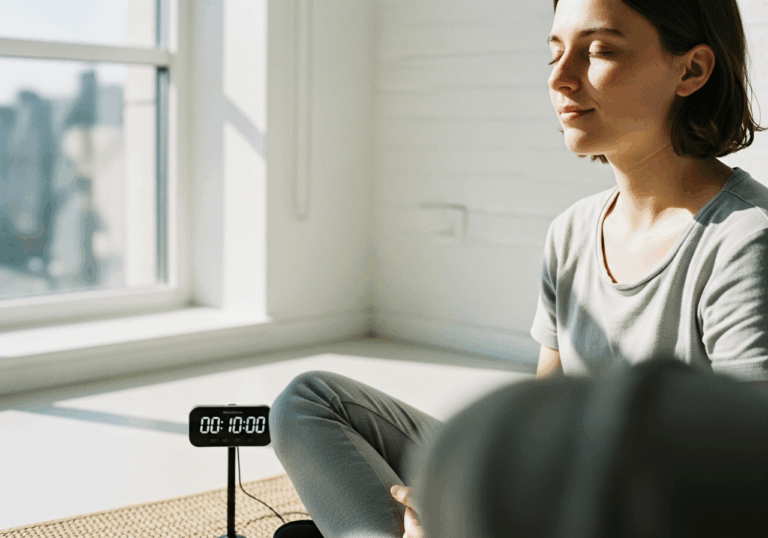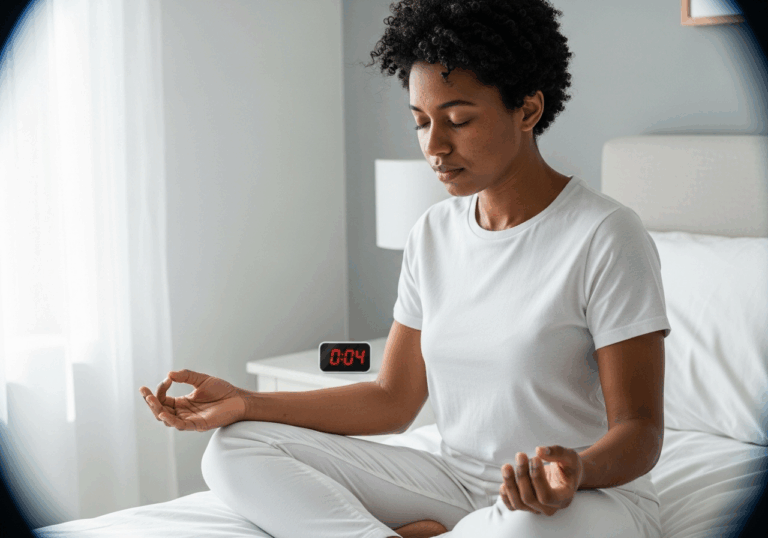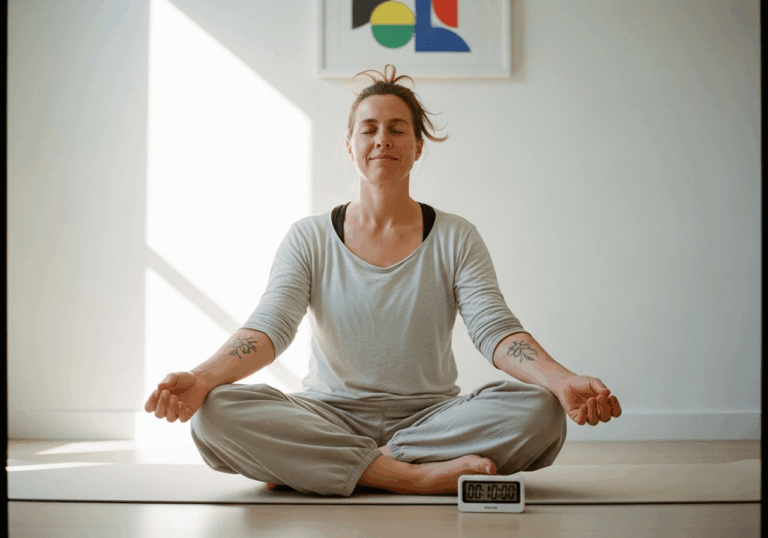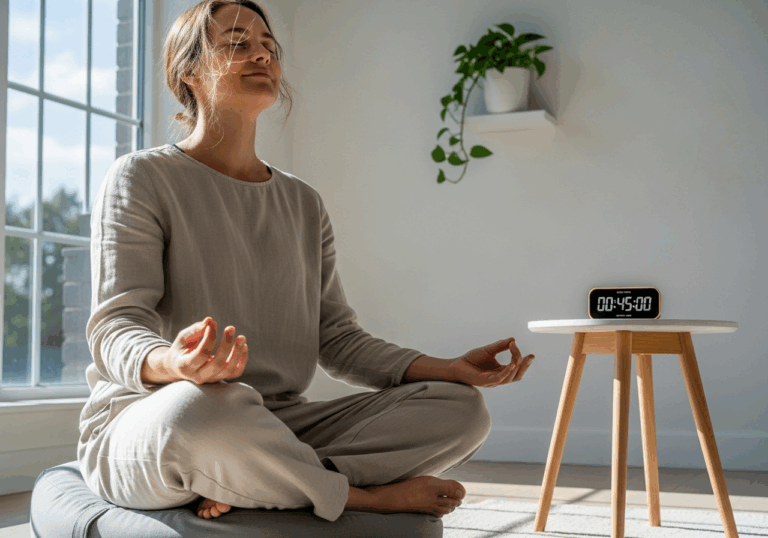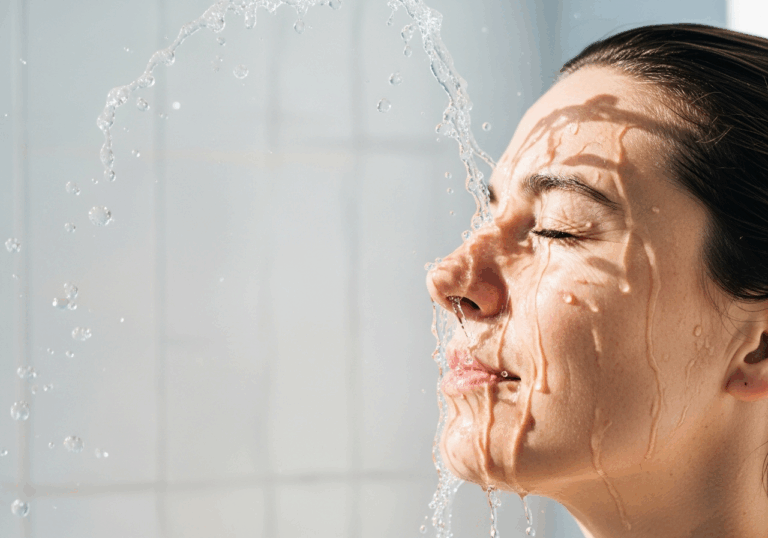Science-Backed Tips
Breathe Your Way to Lower Blood Pressure
Slow-paced breathing can reduce systolic blood pressure by 5–6 mmHg.
📊 Did you know?
💡 Why It Matters
1️⃣
Demonstrates that a simple breathing technique can lower stress physiology and improve cardiovascular health.
2️⃣
May lead to improved quality of life by reducing subjective stress levels, with a negative emotion reduction SMD of approximately -0.51.
3️⃣
Provides a non-pharmacological approach to managing hypertension and stress.
✅ Try These Micro-Tips
🎯
Practice slow-paced breathing for 15 minutes daily at a rate of 6 breaths per minute.
🎯
Incorporate this technique into your routine before stressful events or during breaks.
🎯
Combine slow-paced breathing with mindfulness meditation for enhanced effects.
🎯
Track your blood pressure and heart rate to monitor improvements over time.
📚 The study
This research underscores the importance of simple, non-pharmacological interventions in managing hypertension and stress. By incorporating slow-paced breathing into daily routines, individuals may experience not only a decrease in physiological stress responses but also an enhancement in overall quality of life. This study paves the way for a holistic approach to health, emphasizing the power of breath as a tool for emotional and physical well-being.
Embracing such techniques can lead to a calmer mind and a healthier heart, making it a valuable practice for anyone looking to improve their mental and cardiovascular health.
❓ Frequently Asked Questions ❓
Learn more
What is slow-paced breathing?
Slow-paced breathing involves taking deep, controlled breaths at a rate of approximately 6 breaths per minute. This technique is used to promote relaxation and reduce physiological stress responses.
How long should I practice slow-paced breathing?
It is recommended to practice slow-paced breathing for 15 minutes daily. This duration has been shown to effectively lower blood pressure and heart rate.
What are the benefits of slow-paced breathing?
Slow-paced breathing can reduce systolic blood pressure by about 5–6 mmHg and heart rate by approximately 3 bpm. Additionally, it helps calm mood by lowering physiological arousal and reducing negative emotions.
How does slow-paced breathing affect blood pressure?
Research indicates that slow-paced breathing can decrease systolic blood pressure by 0.45 standard mean difference (SMD). This translates to a reduction of about 5–6 mmHg after a 15-minute session.
Can slow-paced breathing help with stress management?
Yes, slow-paced breathing is an effective non-pharmacological approach to managing stress. It lowers stress physiology and can lead to a reduction in subjective stress levels.
Is there a specific breathing rate I should follow?
The optimal breathing rate for slow-paced breathing is approximately 6 breaths per minute. This rate has been found to maximize the calming effects on the body.
Can I combine slow-paced breathing with other techniques?
Yes, combining slow-paced breathing with mindfulness meditation can enhance its effects. This combination may lead to greater improvements in stress reduction and overall well-being.
How can I track the effectiveness of slow-paced breathing?
You can monitor improvements by regularly tracking your blood pressure and heart rate. Observing changes over time can help you assess the effectiveness of the technique.
When is the best time to practice slow-paced breathing?
It is beneficial to practice slow-paced breathing before stressful events or during breaks throughout the day. This can help you manage stress and maintain a calm state.
What is the impact of slow-paced breathing on heart rate variability?
Slow-paced breathing has been associated with improvements in heart rate variability (HRV), with a standard mean difference (SMD) of 0.37 for RMSSD and 0.77 for SDNN. This indicates enhanced autonomic regulation and overall cardiovascular health.
